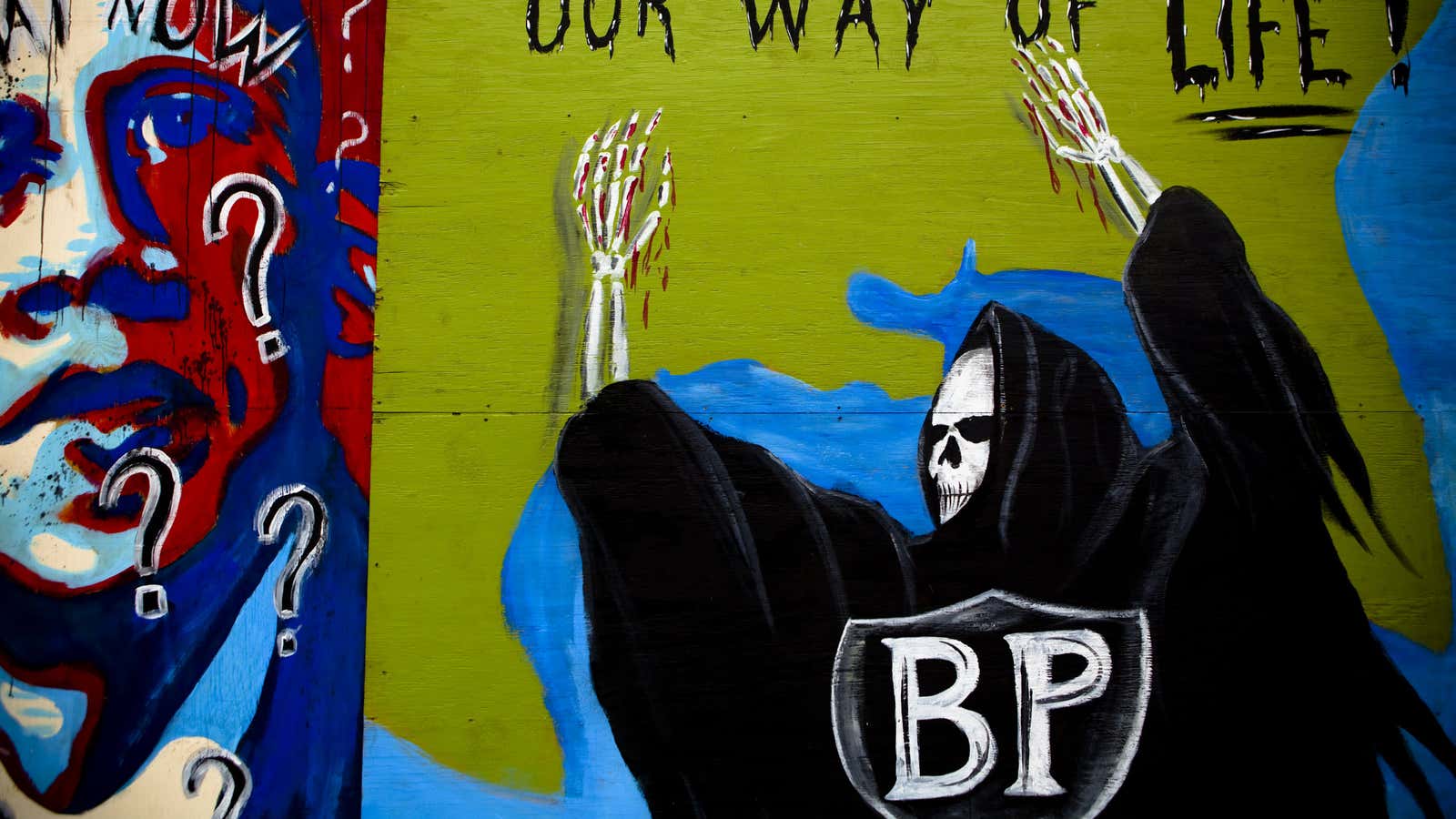On Friday, BP pled guilty to a series of criminal charges as a result of the disastrous Gulf oil spill of 2010 and has agreed to pay $4.5 billion in fines and penalties. So, with the expenditure of up to $40 billion in the next couple of years, will BP be able to quietly sweep this public relations debacle under the rug and then get on with profitably sucking up all that black gold that still resides under the earth’s crust? According to James S. O’Rourke, a professor of business communications and reputation management at Notre Dame University, “The real fallout is not financial; the real fallout is trust.” However, when you consider that back in 2005, BP paid a huge fine and pleaded guilty to a criminal charge from an explosion at one of their Texas refineries that killed 15 people, you have to wonder at the short memories of both Wall Street and the general public.
Compare the billions BP will spend on fines and punitive damages to the mere millions they’ve already spent on advertising programs promoting themselves and tourism in the Gulf Coast region. Over the last couple of years we’ve been subjected to numerous TV spots featuring golden sands, sparkling Blue Ocean and pristine birds flying over a coastline that not long ago was an environmental disaster. Perhaps the $31 billion they will probably have to pay in pollution and environmental penalties under the Clean Water Act and Oil Pollution Act might make this a reality.
But, disaster control and reputation management is nothing new in the advertising and PR business. Nero’s Roman ad agency managed to convince the plebeians that the burning down of their city could unquestionably be laid on the doorstep of that weird new “Christian Cult,” rather than the Emperor kicking over a flaming brazier when he tripped over his lyre during a drunken orgy. All it took was liberal helpings of bread and circuses from the guys on Via Madison.
With today’s proliferation of social media and instant feedback, companies big and small disregard polishing their image and reputation at their peril. According to Crain’s, disaster control is now a booming business for a number of boutique consultancies that deal with “special situations.” Clients who unexpectedly find themselves in urgent need of crisis management and communications help to solve financial, litigation and image problems. Even large companies can be caught on the wrong foot by bad publicity generated through reputable news organizations. Earlier this year, after Apple had announced blockbuster revenues and earnings, the New York Times printed a story about the company’s manufacturing facilities in China that shone an unfortunate light on numerous safety problems, the use of under-age workers, unfair wage policies and record falsification. Instead of ignoring this, Apple launched a massive PR effort which even included a special edition of ABC’s “Nightline” that allowed unlimited access to Foxconn, Apple’s major Chinese manufacturer. And, amazingly, this was all put together and aired within four weeks of the appearance of the original New York Times article. Needless to say, the furor was swiftly damped down and sales of iToys continued to go through the roof.
Compare this with the pathetic damage control undertaken by the Susan G. Komen for the Cure foundation after the public relations fiasco earlier this year surrounding Komen’s off-then-on-again decision to fund Planned Parenthood. Ten months later the organization’s image and funding efforts are still suffering.
Perhaps the single most dramatic illustration of extreme, if not frantic damage control is the recent scrubbing of any possible association of disgraced, no longer a seven time Tour de France winner, Lance Armstrong with the Livestrong foundation that he had founded, and was the ultimate spokesperson/figurehead of. Sad to consider that without Armstrong, there would have been no Livestrong. Even sadder, that with Armstrong, Livestrong could not survive.
In the words of one of the greatest advertising tag lines of all time…Perception is reality. Particularly when stuff hits the fan! In BP’s current predicament, the question is whether the billions spent on penalties and the millions on PR, will serve to change the business practices of the company, or merely be used to repair its corporate image. Based on its track record, and the opinions of some former EPA officials and attorneys, my money’s on the image repair.
